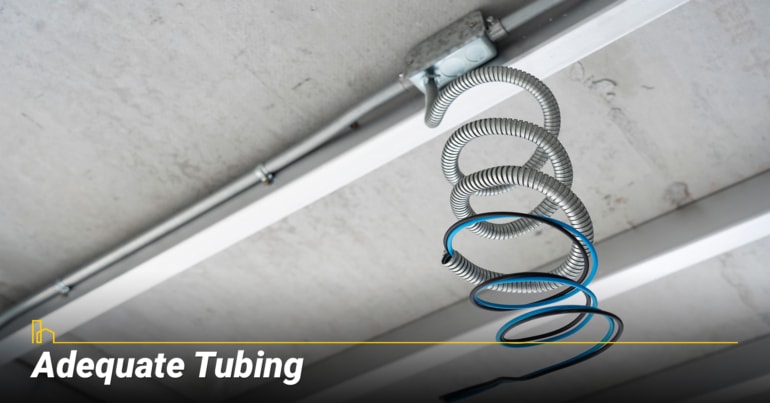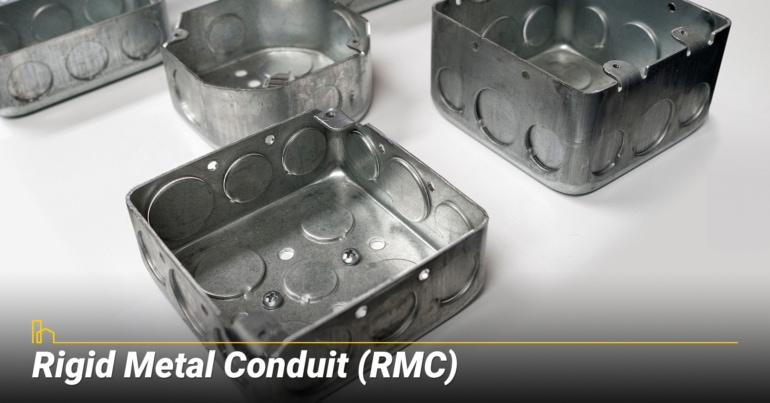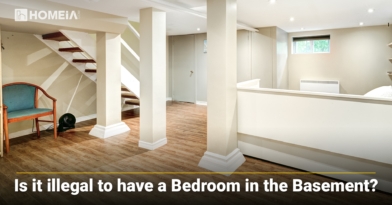What Kind of Conduit Should be Used in a Residential Building?
- Author:by Boris Dzhingarov
- Category: Home Improvement

Conduit is the protective, insulating tubing or casing that surrounds wires and cables of all kinds. Conduit is necessary not just to protect the wires or cables themselves, but also to protect everything and everyone around them.
For example, a high-tension livewire is a death trap unless it is surrounded by adequate protective tubing. Note the term “adequate,” because that’s the key word in understanding what type of conduit should be used in a residential building.
Table of Contents:
1. Adequate Tubing
There are three primary attributes to conduit, each of which is highly variable. These are
- The material
- The firmness
- The thickness
These three variables are selected after considering:
- What the conduit will contain
- Where it will be laid
- How straight, convoluted or jointed the traces and trenches will need to be
Therefore, it is impossible to recommend a specific type of conduit for residential use without knowing the specifics. Nevertheless, the following should provide sufficient guidance on what options are available and where they should be used for maximum safety, longevity and cost-efficiency.
Signs Something Has Gone Wrong with Your Electrical System
Fortunately, it’s not hard to make sure your electrical system stays in tip-top shape. Just pay attention once in a while and notice if there are any signs of trouble. Here’re 9 big signs that your electrical system has a problem—and what to do to keep the problem from growing even…
2. Rigid Metal Conduit (RMC)
The most commonly used industrial rigid conduit is made from metal, which is why it is aptly called “rigid metal conduit,” or “RMC” for short. Although aluminum could be used for electrical tubing, galvanized steel is the default material used for manufacturing RMC. Heavy-duty rigid metallic conduit, such as galvanized rigid steel conduit (GRC), is not commonly used in residential infrastructure; intermediate metal conduit (IMC) has replaced it almost entirely in that segment.
Typically, RMC is used in outdoor settings, since it is very good when it comes to resisting the effects of the elements. It offers protection from several types of damage, including fire, and it is good at providing support for panels, electrical cables and other elements.
3. Electrical Metallic Tubing (EMT)
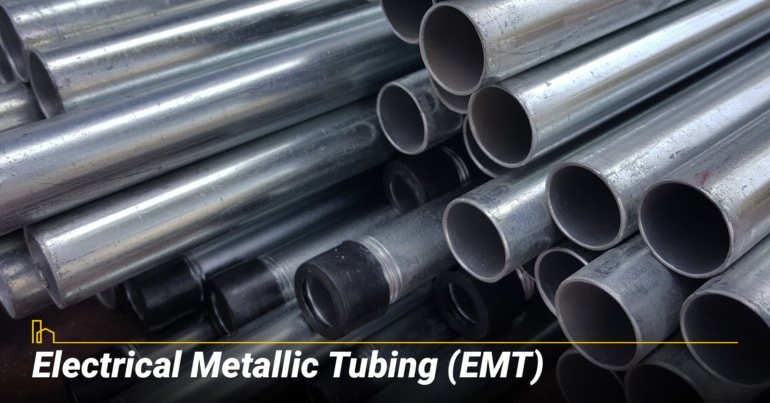
Electrical metal tubing (much more commonly known simply as “EMT”) is a rigid type of electrical conduit. It is often made out of galvanized steel, although aluminum is a suitable option in some projects. Specialists often refer to EMT as a “thin-wall” conduit since it is lightweight and thin, but only when compared to RMC. EMT is still rigid, although you can bend it with very simple tools.
Electrical metallic tubing is usually installed with fittings and couplings. These are secured with compression-type fasteners or set screws. Unlike RMC or IMC (presented below), the actual tubing is not threaded. It comes in several common sizes, usually ranging from one half inch to one inch.
Specialists use EMT for exposed indoor wiring present in light commercial construction and residential construction. When EMT is installed in an outdoor setting or exposed location, special watertight fittings have to be used.
Is it illegal to Have a Bedroom in the Basement?
Thinking through your options, you realize there is unused space in the basement. If you just tidy up the storage a bit, you would have room for a bed. But wait… something in the back of your mind says you can’t have a bedroom in the basement. Is that true? Here we’ll take a look at the truth about basement bedrooms, and how you can make your…
4. Electrical Non-Metallic Tubing (ENT)
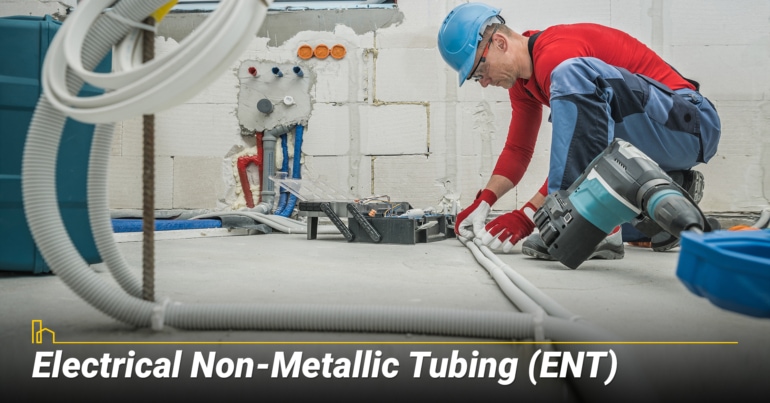
ENT is very flexible. It is corrugated plastic tubing with a high moisture resistance. It is also flame-retardant. You can easily bend it and install it with the use of glued plastic fittings or snap locks.
As opposed to EMT, ENT is not at all a good idea in any exposed location. That is why we often see it placed inside walls. Electrical non-metallic tubing can be installed in both metal-frame and wood-frame walls. It can also be placed inside concrete walls, because it can be covered with concrete without a problem.
As a fun extra fact, many know ENT as “Smurf tube” because a very common brand is blue.
5. Intermediate Metal Conduit (IMC)

Intermediate metal conduit, or “IMC,” can also be classified as a type of rigid metal conduit. However, its double-coated tubing is significantly lighter than RMC. The corrosion-resistant coating inside the IMC reduces friction, which makes it easier for electricians to pull wires through. Being lighter and easier to work with, IMC is the preferred choice in most modern home infrastructure projects.
A big advantage of IMC is that it is easier to use than the more common RMC. You can work with it with ease, so we often see it in brand-new buildings, including in indoor settings.
What is Forced Air Heating? Pros & Cons of a Forced Air System
Forced air heating systems are the most popular home heating systems in North America. But how do they work? And are they right for all homeowners, or are there other options? Here we’ll explore how a forced air system works and take a look at its Pros and Cons. Then we’ll introduce a few alternatives that may work for certain homeowners…
6. Flexible Fiberglass Conduit

Fiberglass must be saturated by either epoxy resin or phenolic resin before the material can be shaped into flexible conduit. While both resins are capable, phenolic impregnation of fiberglass makes the material even more heat resistant. Whereas flexible epoxy conduit reaches its maximum temperature threshold at roughly 230°F, FRE phenolic conduit can resist temperatures as high as 525°F.
Neither PVC (150°F) nor coated IMC (158°F) can compare with such high levels of heat resistance. Since flame resistance is a critical requirement for all electrical conduit, there is no other flexible conduit material that can match phenolic tubing. The fact that fiberglass is also extremely light and highly durable only makes it better, and it is the default choice in many instances.
Today we no longer require all of the old classifications for types of conduit, such as electrical metallic tubing, electrical non-metallic tubing, galvanized rigid conduit and flexible metal conduit (FMC). These subdivisions either have lost meaning or have become synonymous with another of the conduit types we’ve already explained.
For example, the term “galvanized rigid conduit” usually just refers to the thickest rigid metal conduit, which is used exclusively in industrial work. “EMT,” on the other hand, can refer to any rigid metallic tubing used to encase electrical wires — most of which is IMC.
Private Water Wells Can Increase Property Value and Decrease Monthly Costs
Water wells can bring forth nostalgic visions of a simple life where one fetched a bucket of water at the pump. While wells have a place in the imagination, they also have a place in the modern world. Simply put, a well is a private water source that can serve as an alternative to a municipal…
Final Thoughts
As you can see, several types of conduits are available in residential buildings these days. Choosing the very best one can be a little difficult for those who do not have the necessary knowledge. However, in many cases, even if you choose something that is not 100% perfect, in a residential setting, it is still at least a decent option.
With commercial properties, this is not the case. If you are looking into conduit for use inside commercial buildings, leave the decision to an expert. A licensed professional will be aware of the law and of all the types that can be used in specific scenarios.
The 10 Paint Ideas for Open Living Room and Kitchen
If you’ve been spending more time than usual in your own home lately—and who hasn’t? — you may be itching to refresh your living space with a new coat of paint. Here are 10 paint trends that will help you bring your living room out of the past and into a satisfying future…

